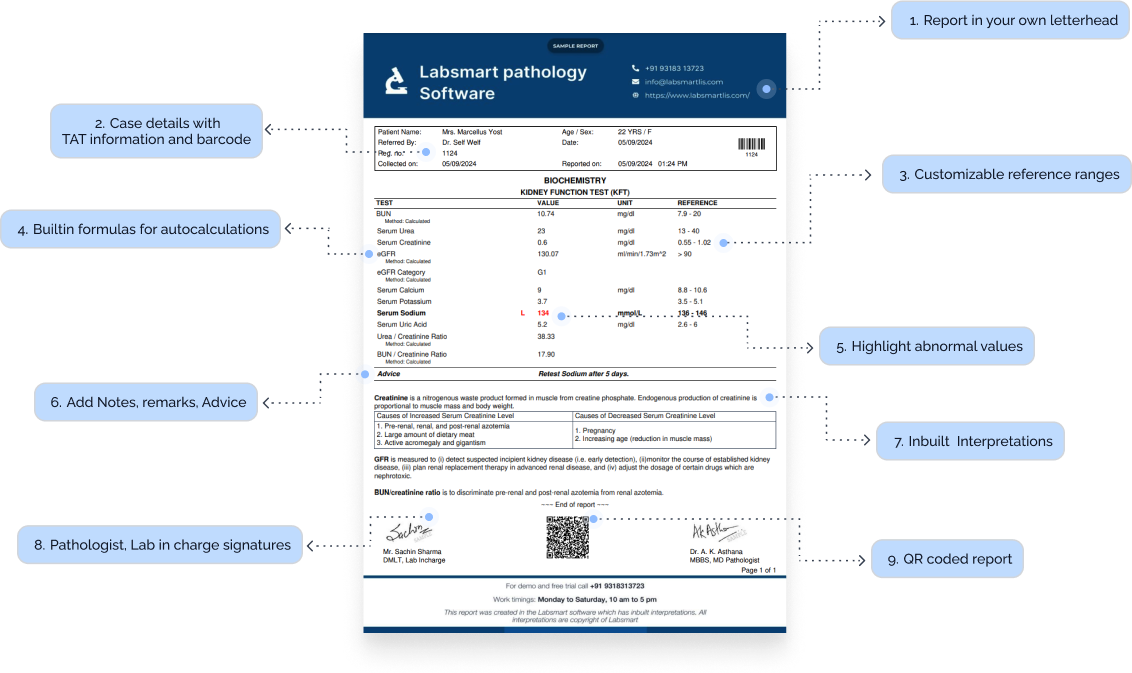
Join a free live demo now!
See all features live
Understand the benefits
Get your questions answered
No purchase pressure

What is Total Leukocyte Count (TLC) ?
Leukocytes, also known as white blood cells, are essential for fighting infections and protecting our body from harmful invaders. Our Total Leukocyte Count measures the number of these cells in our blood, giving us and healthcare provider insights into our immune health.
Total Leukocyte Count (TLC) Report Format: Breakdown
The TLC report is typically part of a Complete Blood Count (CBC) test. The report format of TLC usually follows this structure:
Header Information:
- Patient Details: Full name, Age, Gender, and ID.
- TAT information: Timestamp for both sample collection and report generation.
- Doctor's Information: Name of the referral doctor, if applicable.
Test Results Section:
-
Patient's results
As obvious as it is, a test report should definitely have the patient's test result.
-
Result's Unit
The unit of the test result must be mentioned correctly in the report. Total Leukocyte Count (TLC) test is generally reported in “cumm”
-
Total Leukocyte Count (TLC) Normal Value / Reference Range
The report must have the normal Total Leukocyte Count (TLC) range. It can differ slightly based on the reagents used by the lab and other internal factors, but common Total Leukocyte Count (TLC) ranges are:
For any gender, 0 to 14 days of age: 9,000 - 30,000 cumm For any gender, 15 to 60 days of age: 5,000 - 21,000 cumm For any gender, 61 days to 6 years of age: 5,000 - 19,000 cumm For any gender, 6 to 100 years of age: 4,800 - 10,800 cumm
Interpretations
Nowadays, most labs prefer to add interpretations to the reports, making the report more patient-friendly. Labsmart software has interpretations of all routine test pre-filled in the software.
Footer Section:
-
Certifications:
Display any relevant accreditations (e.g., NABL, ISO), adding to your lab's credibility.
-
Pathologist and technician signature:
It's mandatory to add a Pathologist and technician signature to the report.
TLC Interpretation
In Labsmart software, this is the inbuilt interpretation for Total Leukocyte Count (TLC)
Importance of adding interpretation to reports:
It's very helpful to add interpretation in reports as it makes the reports more patient friendly and also helpful to doctors in some cases. Moreover, presently most labs prefer providing reports with interpretation. Thus, adding interpretation to report will help your lab stay at par with other competitor labs.
Labsmart Pathology Reporting Software
(With Interpretation and auto calculations)
- Billing
- Reports with Interpretation
- Auto calculation where needed
- Check daily business
- WhatsApp reports

1.5 Crore+
Reports printed & delivered online
1250+
Labs Active
10+
Countries
TLC MS Word format
Download the Ms word editable Total Leukocyte Count (TLC) report format for offline reporting.
Download word format



















